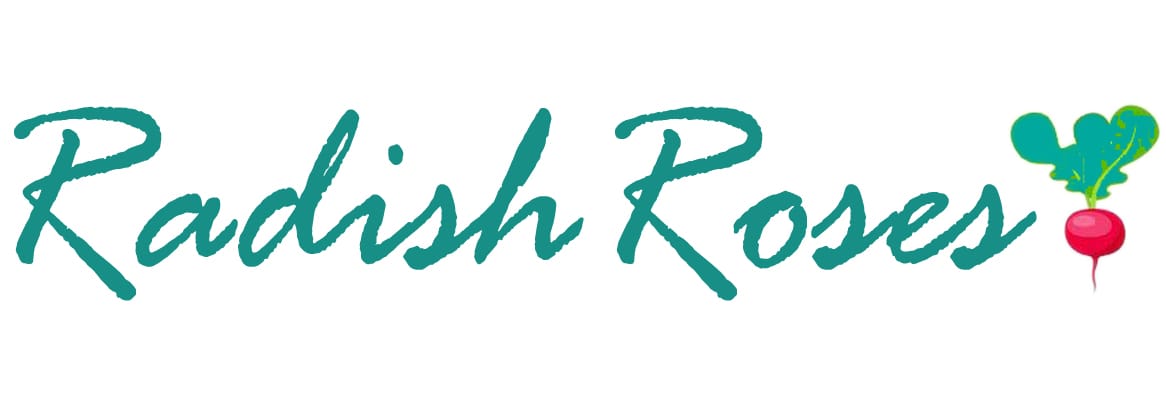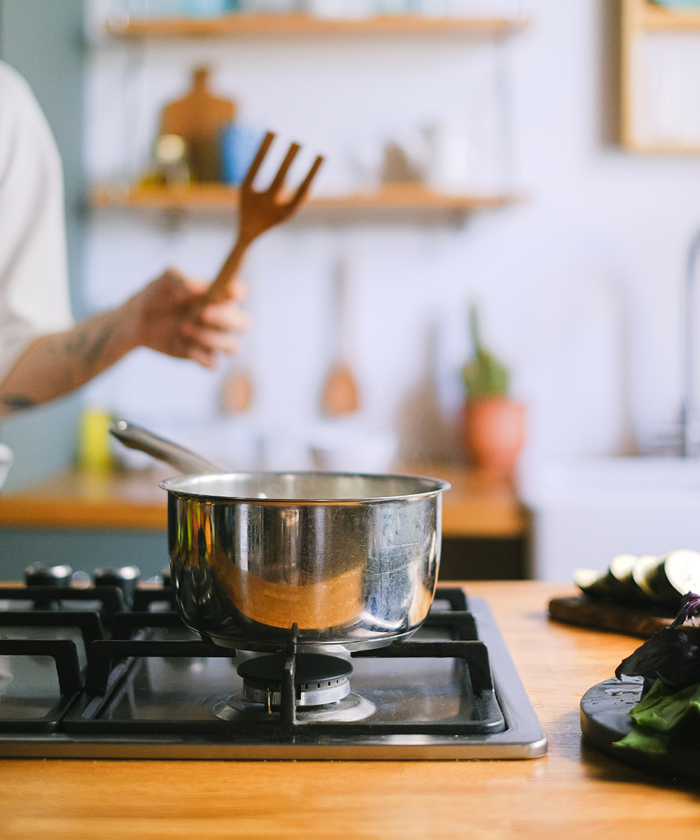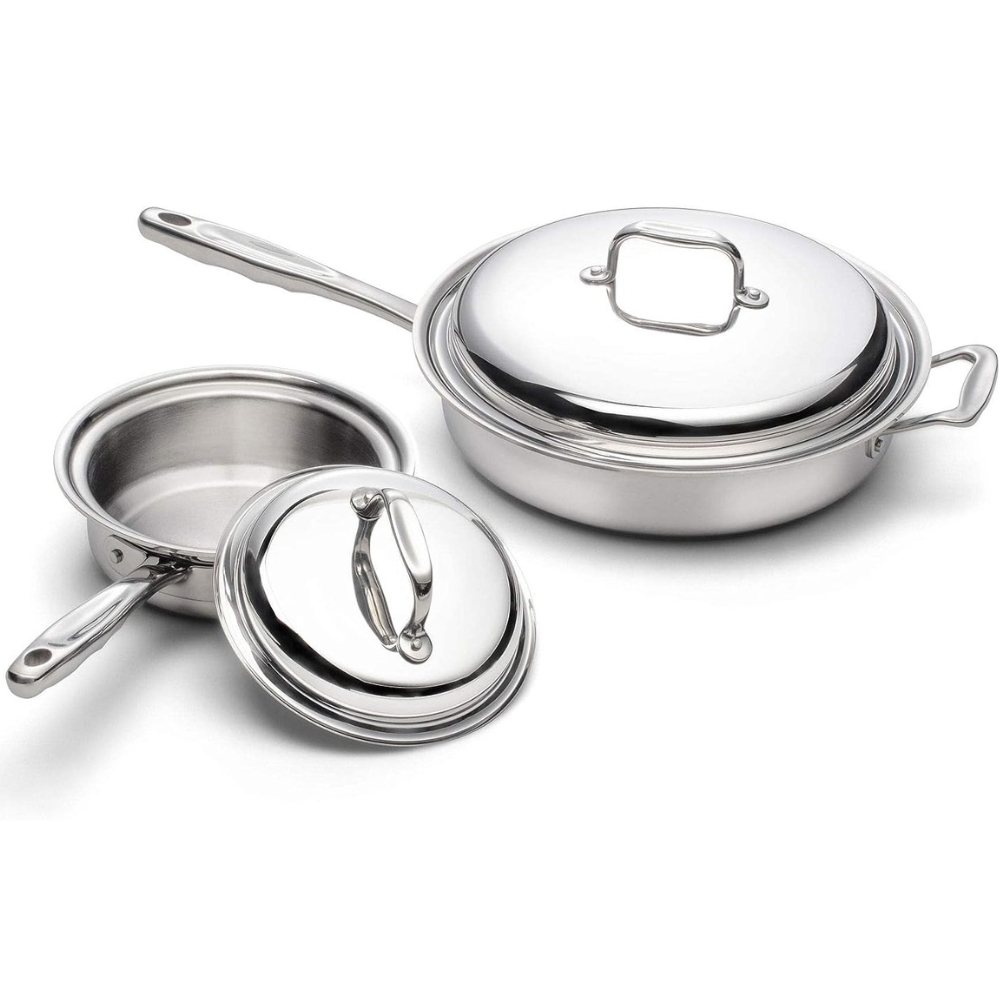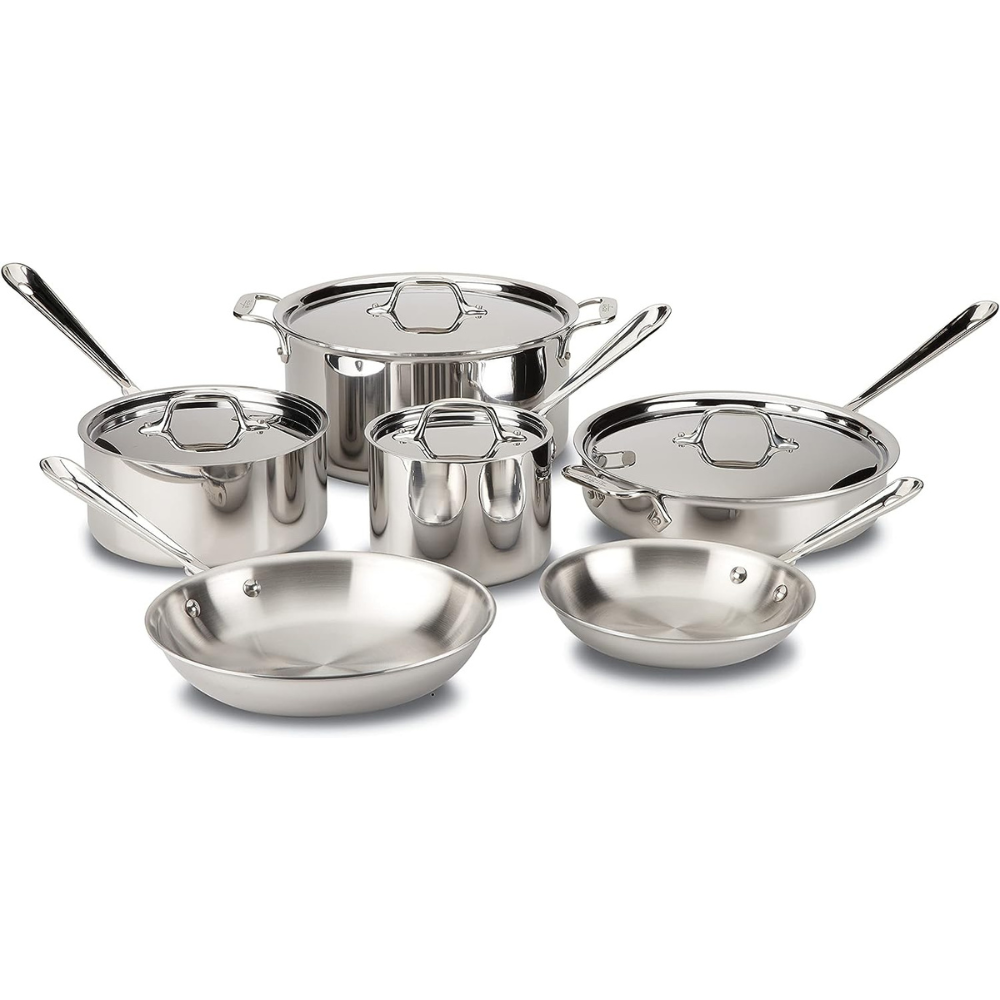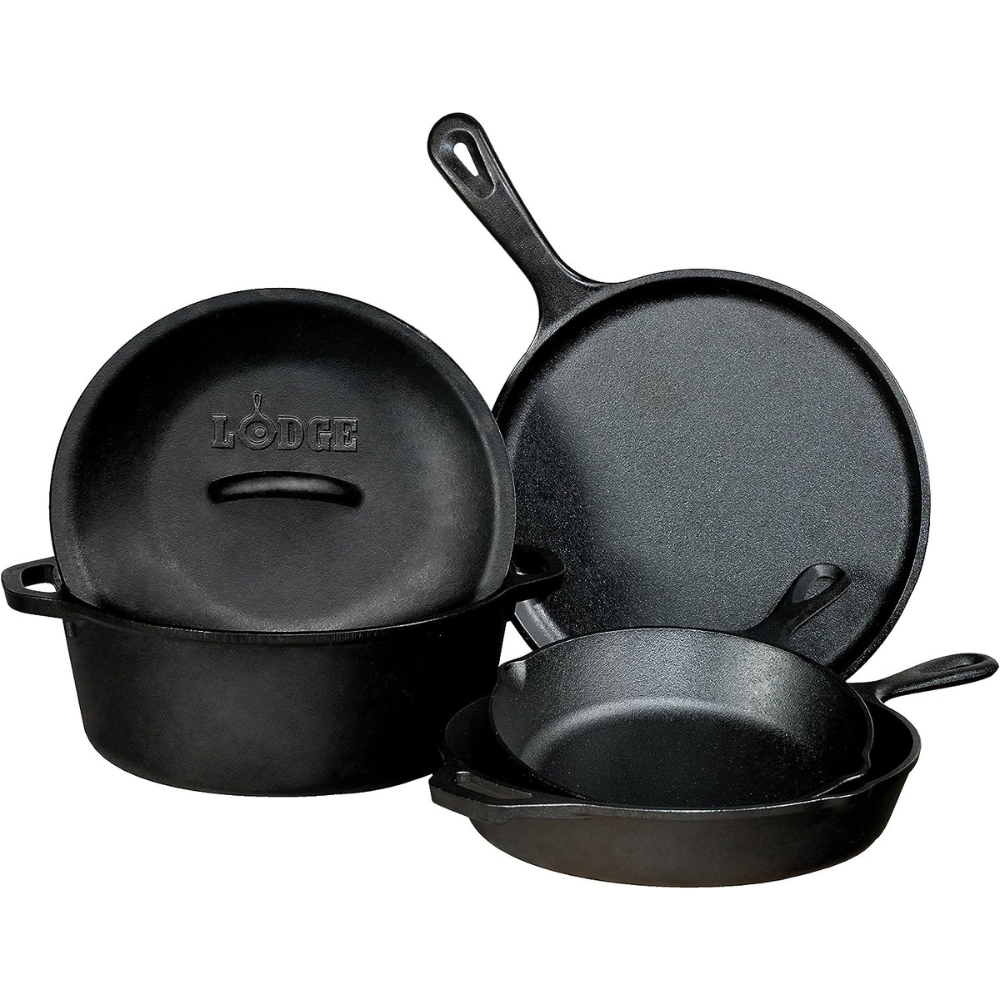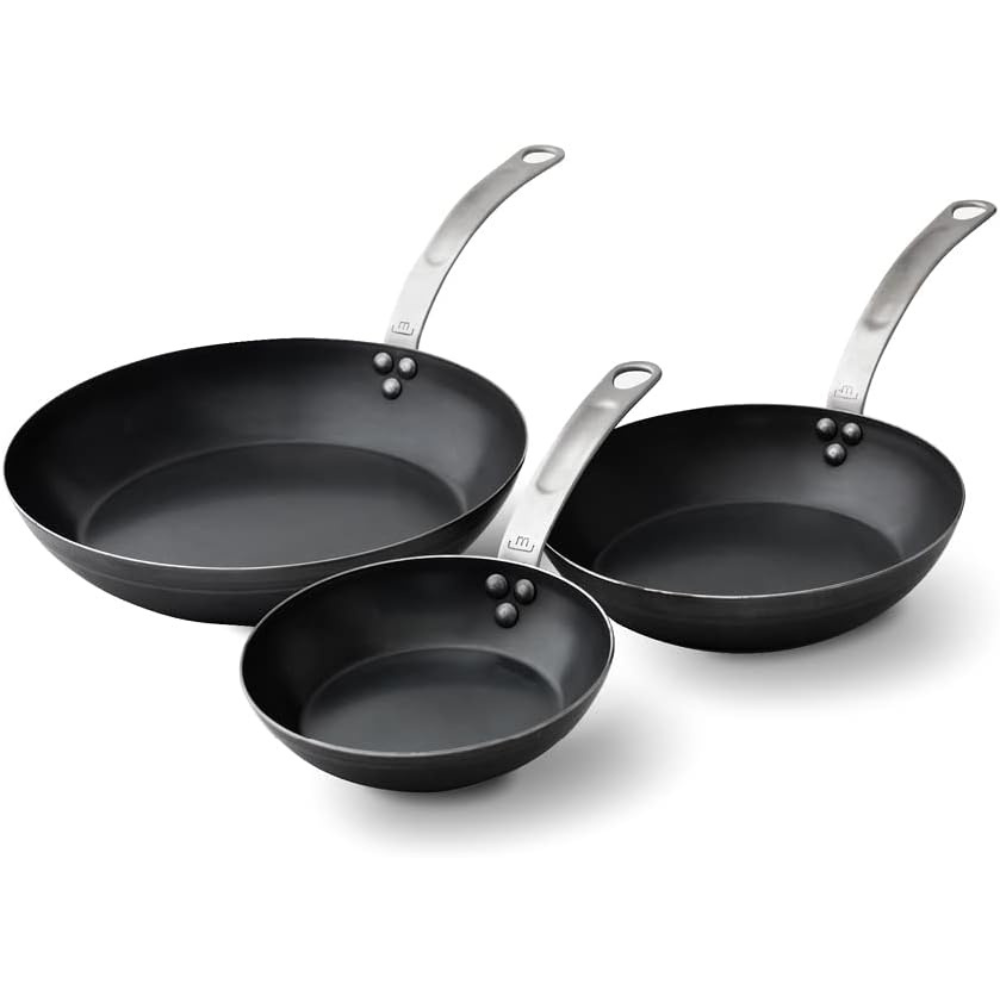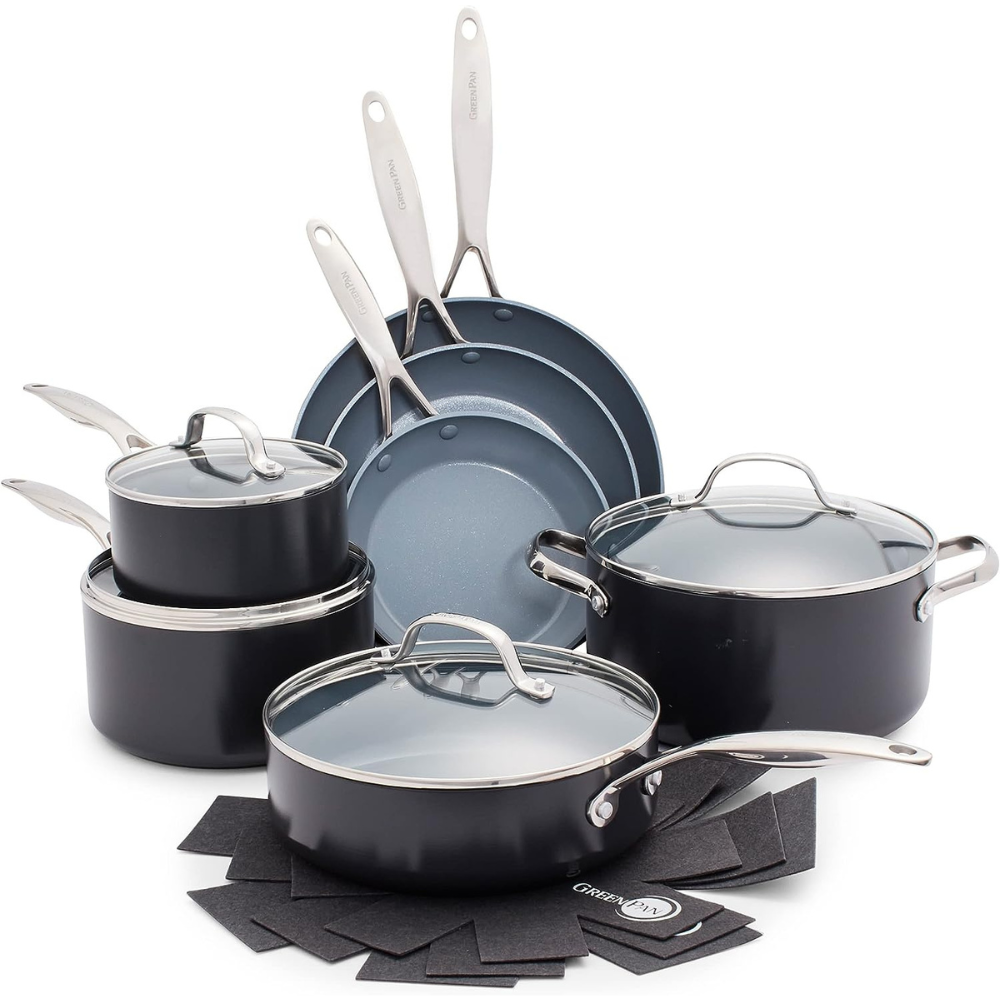Looking for the best cookware to use with your gas stove?
Stop guessing and start cooking with confidence!
We have sifted through hundreds of pots, pans and skillets to compile a list of our top recommendations.
No more trying to figure out if you should buy aluminum or cast iron for your gas stove.
We have found all the best materials, sizes, shapes, and brands that are surefire winners for gas stoves.
Make meal prep a breeze and cook like a pro in your own kitchen.
Whether you're an experienced chef or just picking up some new skills, these recommended products will help achieve better results every time you cook with your gas stove, so you can wow everyone at the table!
Browse our selection of the best pots and pans for gas stove cooking to get started with creating memorable meals!
When it comes to cooking, having the right pots and pans can make a world of difference.
If you have a gas stove top, it's even more important to understand what kind of cookware works best with your appliance to protect your investment and avoid damaging your cookware.
That's why we've carefully researched and compiled a list of our picks for the best pots and pans for gas stoves.
We know that no two households are alike when it comes to cooking needs.
Regardless of whether you're an experienced chef or just getting started in the kitchen, this guide has the perfect set for your cooking needs, in carbon steel, hard anodized aluminum, stainless steel, or cast iron, in various sizes and shapes.
This guide should provide all the information needed so you can shop confidently for your next set of cookware.
Our Review Process for Best Pots and Pans for a Gas Stove
Navigating all the sources to find the best cookware for your gas stove can be overwhelming and time-consuming.
With so many options, it’s hard to know what cookware is going to give you the best results with your gas stove.
We have listed our favorite cookware set in the following categories:
BEST Small Business:
The best small business supplier of gas stove cookware, regardless of material or style.
Stainless Steel:
Highly durable and corrosion-resistant, stainless steel is a great choice for all gas stoves.
Hard Anodized Aluminum:
Hard anodized aluminum is incredibly strong and offers excellent heat retention. It's also non-stick and has no chemical coatings.
Carbon Steel:
Carbon steel is extremely lightweight yet still highly conductive, making it great for fast cooking and even heat distribution.
Cast Iron:
Cast iron is the perfect choice if you're looking for durable cookware for your gas stove that will last you many years.
Non-stick:
Non-stick-coated pans CAN be used with gas stoves, but we would recommend opting for ceramic-coated non-stick pans over other types.
Not only does cooking with the wrong kind of cookware for gas stoves waste energy, but it can also ruin your food. Not to mention that buying the wrong set can be an expensive mistake if your pots and pans wear out prematurely and need to be replaced!
Let RadishRoses help - we've done all the research and reviewed thousands of ratings and consumer reviews so that you can get all the information on the best pots and pans for gas stove cooking in one place!
With our curated list, you can quickly find the highest-quality cookware that's best suited for your needs.
Our Picks for Best Cookware for Your Gas Stove:
360 Stainless Steel Cookware Set
What Stands Out:
- Handcrafted in West Bend, Wisconsin, USA
- The EPA-recognized manufacturing process uses no harsh chemicals in finishing
The Details:
- Small Business - Manufactured in Wisconsin from surgical-grade stainless steel.
- Four-piece set includes a 1-quart saucepan with a lid and a 3.5-quart sauté pan with a lid.
- Ergonomic stainless steel handles.
- Induction-friendly and oven safe up to 500 degrees Fahrenheit (°F)
- Thick, 0.11 gauge with an aluminum core for superior heat conduction. The products also come with a lifetime warranty.
- Also safe for Induction cooktops
The Downside:
- Higher priced than other sets, but small business, boutique brand quality more than makes up for it.
All-Clad D3 3-Ply Stainless Steel Pots and Pans, 10 Piece
What Stands Out:
- Bonded and assembled in Canonsburg, Pennsylvania, USA
- High ratings from nearly 7,000 reviewers
The Details:
- Brushed stainless finish. The stainless steel surface is safe, non-toxic, and will not discolor or flake.
- Aluminum core prevents uneven cooking, and is oven-safe to 600°F
- 10-piece set includes: 8" and 10" fry pans, 2-quart and 3-quart covered saucepans, 3-quart covered sauté pan, and 8-quart covered stockpot
- Riveted, stainless steel handles
- Also safe for Induction cooktops
- Dishwasher safe
The Downside:
- Even the best stainless steel cookware can take some getting used to compared to using nonstick cookware, so read the recommendations for proper use to get your best results!
Lodge Seasoned Cast Iron 5 Piece Bundle
What Stands Out:
- Great value for cast iron set
- Cookware is made in the USA
The Details:
- Cast iron retains heat to provide even heat distribution.
- Excellent cookware for gas stoves, heat safe for use in the oven, and can also be used on the grill
- Cast Iron is timeless and incredibly durable. Will last a lifetime if cared for properly, and can be revitalized even if not treated properly!
- The set includes a 10.5" griddle, a 10.25" skillet, and a 10.25" grill pan. Also includes a silicone pot holder and handle cover, pan scraper and grill pan scraper.
The Downside:
- Cast iron pots must be cared for properly, so be sure you follow the manufacturer's instructions to know how to prepare and maintain the cooking surface.
- Depending on your aesthetic, you might not appreciate the look of bare cast iron material. Lodge offers some beautifully colorful enameled Dutch ovens, but if you really prefer an entire set of enameled cast iron cookware, you might find more options with LeCreuset cookware sets.
Optional (but helpful!) Accessories For Cast Iron Cookware (AMAZON links):
Cast Iron and Carbon Steel Seasoning
Stainless Steel Chain Mail scrubber for cast iron
Cast Iron Cookware storage and display rack
Made In Cookware 3-Piece, Blue Carbon Steel Fry Pan Set
What Stands Out:
- Durable and lightweight
- Small Business
The Details:
- Small Business
- Carbon Steel pots and pans combine the best of cast iron and stainless steel, for cookware that is durable and lightweight
- 3-piece set includes 8", 10", and 12" frying pans
- Excellent choice of cookware for gas stoves, as they are heat resistant up to 1200°F, and safe to use on stovetop, oven, and can even be used on the grill
- Nonstick coating
The Downside:
- Must be cared for properly, including seasoning, so be sure you follow the manufacturer's instructions.
- High-quality materials place this cookware set at a much higher price than other sets.
Cuisinart 17-Piece Hard Anodized Aluminum Cookware Set, Chef's Classic
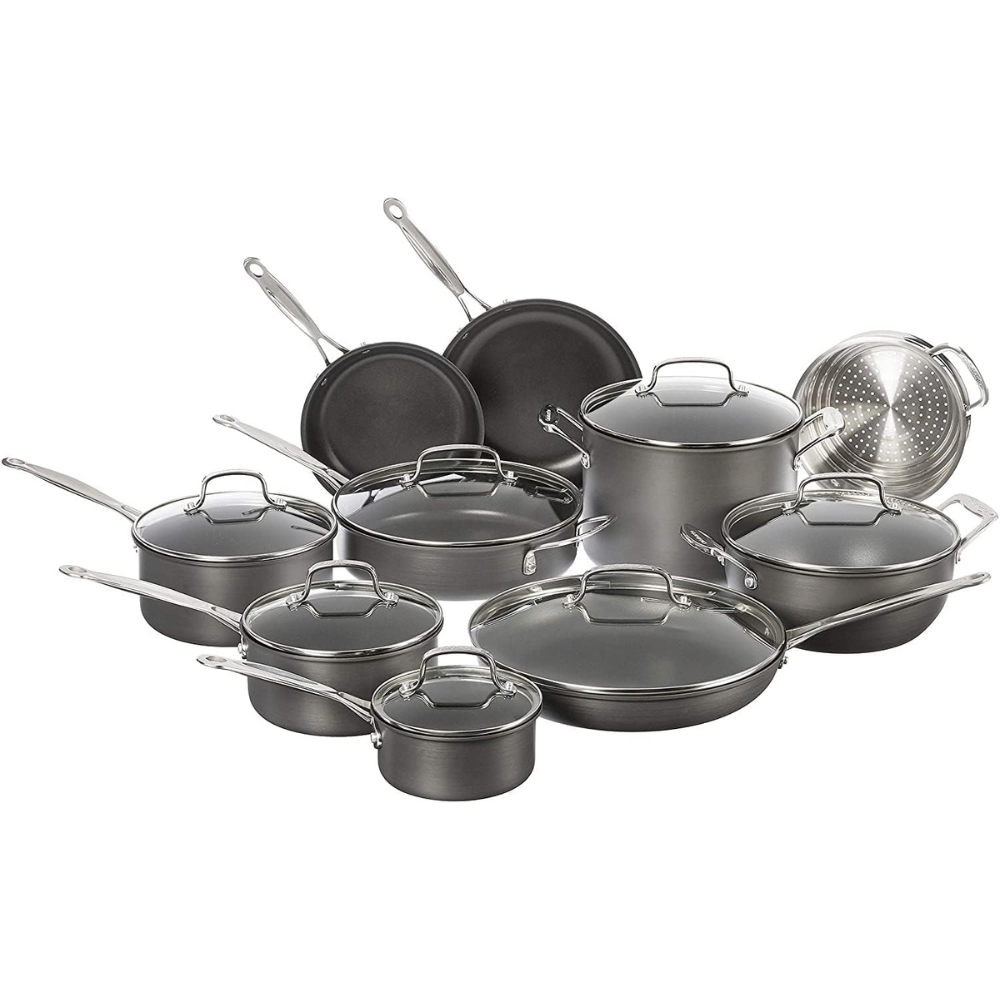
BEST Hard Anodized Aluminum Cookware
Cuisinart Hard Anodized Aluminum Cookware
What Stands Out:
- Great value for the price
- High customer ratings
The Details:
- The hard anodized aluminum pots and pans are extremely durable with excellent heat conductivity, perfect for gas stoves
- Easy to clean, non stick coating
- The set includes: 1, 2 and 3-quart saucepans with glass covers, a 3.5-quart saute pan with glass cover, a 4-quart Dutch oven with glass cover, an 8-quart stockpot with glass covers, 8”, 10”, and 12” nonstick skillets with glass covers, and a steamer insert with cover
- Pans are oven-safe, heat resistant to 500°F. Tempered glass lids are heat resistant to 350°F
The Downside:
- The aluminum pans non stick coating can scratch easily. Never use metal utensils. You should use wooden or silicone utensils to protect the surface of the pans.
- Hand washing is recommended to keep them looking and performing their best
GreenPan Valencia Pro, Hard Anodized, Ceramic Nonstick Cookware
What Stands Out:
- Toxin-free, ceramic nonstick coating
- Dishwasher Safe
The Details:
- The 11-piece set includes: 8'' fry pan, 9.5'' fry pan, 11'' fry pan; 2-quart and 3-quart saucepans with lids; 3-quart skillet with lid; 5-quart casserole with lid
- Made from hard anodized aluminum, to evenly spread heat. Stainless steel handles. The ceramic nonstick coating is non-toxic.
- Safe to use metal utensils on ceramic nonstick surface
- Pots and pans are oven safe to 600°F. Tempered glass lids are oven safe up to 425°F
The Downside:
- Higher price point than some other choices
Common Questions About Best Pots and Pans for Gas Stove-FAQs
Even with a list of the best gas stove cookware, you might want a little more information before making your decision.
There is so much variety in features and cost of cookware, it can be a very big decision.
You want to have all the information possible to make a well-informed choice.
This can be a big investment, after all, and you want to make a good choice that can last you for several years.
Here are some questions others have had regarding the best pots and pans for gas stove cooking.
We hope you find some answers to any lingering questions you might have before making your final choice to buy.
What kind of cookware materials are best for a gas stove?
It is important to give consideration to what type of material your gas stoves cookware set should be made from.
Cast iron or stainless steel cookware with an aluminum or copper core are often considered the best choice cookware for gas stoves due to their durability and even heat distribution; however, hard anodized aluminum pans (which may also contain a copper core) also provide for even heating .
Nonstick surface materials such as Teflon can be used on gas stoves, but should generally only be used over lower temperatures since they may emit some chemical fumes during the cooking process at high heat levels.
Besides choosing the right material, different features such as lids and handles may offer additional benefits depending on their design and construction materials.
Lids made from tempered glass allow you to easily monitor cooking progress without lifting the lid while stay-cool handles provide extra safety when maneuvering around hot surfaces during cooking cycles.
Also, keep in mind that some styles of cookware for gas stoves provide better aesthetic value than others – so if style matters then consider this too!
Can non-stick cookware be used on gas stove?
Yes, you can absolutely use non-stick cookware on a gas stove.
It is common to use non stick cookware on gas stoves, and most manufacturers will recommend it is safe to do so.
However, there are some important things to keep in mind when using non-stick cookware on gas stoves.
First and foremost, make sure you have adequate ventilation while cooking with this type of cookware.
Non-stick coatings contain PFAS (Perfluoroalkyl Substances) that emit toxic fumes when overheated which can be harmful if breathed in for extended periods, over time.
PFAS (Perfluoroalkyl Substances)
PFAS are a family of chemicals that are used by many cookware brands in the production of non-stick pots and pans.
While they are great for preventing foods from sticking during cooking, their environmental and health effects make them a somewhat controversial product.
Ingestion of PFAS can lead to serious health issues including cancer, reproductive harm, and hormone disruption.
Proponents of the substances argue the chemicals still in use do not pose a health risk unless heated to high temperatures (above 500 degrees F or 280 degrees C).
PTFE (polytetrafluoroethylene)
PTFE is a PFAS that is still the main compound in Teflon, a coating common in non stick cookware brands. PTFE toxicity from toxic air created at high heat has been found to cause lung injury and has even been reported to kill birds that have breathed in the off gassed chemical compound.
Second, invest in high-quality non-stick pans specifically designed for use with a gas stove top, rather than an electric stove or induction stovetops.
These tend to have better heat distribution than other types and provide better temperature control.
Additionally, make sure that your pots and pans have an appropriate handle length for easy maneuverability on your particular burner size and avoid using metal utensils which could damage or scratch away at the coating reducing its longevity over time.
What are the healthiest pots and pans to cook with?
When it comes to choosing the best cookware set for healthy cooking, three materials, in particular, stand out: stainless steel, cast iron, and ceramic cookware.
Ceramic
Ceramic cookware offers a non-stick surface that’s free from harmful chemicals like PFAS (Perfluoroalkyl Substances) and can be used at lower temperatures than most other cookware materials.
Ceramic cookware is also highly durable, so you don’t have to worry about replacing it anytime soon.
The only downside is that, compared to other high-quality materials, it may not be as heat resistant, so may not work as well on high-flame cooking styles like sauté or stir fry.
Stainless steel
Stainless steel is one of the best cookware for gas cooking due to its durability while still avoiding toxins like PFAS and cadmium.
Stainless steel has excellent heat distribution capabilities so works great with all types of cooking methods including induction stoves as well as traditional gas and electric stoves.
You should avoid using metal utensils when cooking on stainless steel however since they can leave scratches which can cause bacteria to build up over time.
For those looking for an even healthier option, cast iron is one of the best healthy cookware materials because it provides superior heat retention without any toxic chemicals leaching into food during preparation or storage.
Cast iron
Cast iron retains heat and will distribute heat evenly, which helps foods bake more evenly than other surfaces.
Not only do they spread heat evenly, but they have higher heat retention, so foods will cook longer after being removed from the heat source.
Additionally, they naturally release fats from meats which improves flavor while cutting down on fat content overall!
Plus they require little oil to keep contents from sticking making them an ideal choice for low-calorie meals too!
The key here, though, is "seasoning"* your cast iron correctly.
Use vegetable oils instead of animal fats throughout the lifetime of your pan to allow better adherence to food but prevent unhealthy buildup over time!
*Seasoning is a surface preparation process for cast iron (and also carbon steel) pots and pans that involves heating the cast iron material with an oil coating. This protects and forms a seal in the porous material and prevents foods from sticking during cooking. A well-seasoned cast iron cookware set can rival the best non stick pans for preventing foods from sticking during cooking.
See your cookware set owners manual for instructions.
What pans should every cook have?
Every cook should have a few basic pans in their kitchen to make sure they can create delicious meals with ease.
A good set of cookware will include at least one skillet, one large sauté pan (ideally non-stick), and a Dutch oven or stockpot.
Skillets are great for so many tasks: scrambling eggs, searing steak, frying potatoes; the possibilities are endless!
Pots and pans can come in a variety of materials, like stainless steel, cast iron, aluminum and non-stick options.
Non-stick is usually the easiest to use if you’re mainly going to be making eggs and pancakes since it won’t stick as much as other materials do.
Stainless steel cookware is incredibly durable and heat evenly over time but may require a bit more elbow grease when it comes to clean up.
For creating larger dishes like stir-fry or even braised meats, a large sauté pan is an essential tool for any kitchen arsenal.
Look for ones with flared sides so that liquids won't run off too quickly while stirring and thick walls that retain heat better than thinner pans do.
Lids can also be very helpful features when steaming vegetables or simmering sauces - just remember not to place them on hot surfaces as they could crack from rapid temperature changes!
If you're planning on making soups or stews then consider investing in a Dutch oven or stock pot.
A Dutch oven generally features taller sides than regular pots which help reduce evaporation during cooking processes such as boiling liquid down into syrups like jams or jellies too!
A Dutch oven typically has heavier construction material that helps retain heat which makes it particularly useful for slow-cooked dishes like pulled pork carnitas or beef stew since these recipes need long periods of low simmering temperatures to achieve their flavorsome potential.
Ultimately any good collection should contain at least one skillet (preferably non-stick), one large sauté pan/skillet with lid (stainless steel lids are great here!), plus some sort of Dutch oven or stock pot combination depending on your needs – this way you’ll always be prepared no matter what kind dish you might want to make!
What kind of stove do chefs prefer?
Chefs have their preferences, and the stove they choose depends on many factors. Generally speaking, professional chefs tend to prefer gas stoves.
This is because gas stoves allow for more precise temperature control than electric ranges, which can be highly important in cooking certain dishes or recipes.
Gas stoves also tend to heat up quickly and cool down quickly as well, making a gas stovetop extremely versatile when it comes to different methods of cooking.
Countertop induction cooktops are gaining popularity over gas stoves amongst some professional chefs due to their safety features (you can't burn yourself on a hot plate), energy efficiency (induction cooktops only heat up what is being cooked instead of needing preheating like regular electric ranges), fast heating speeds comparable with gas stoves while remaining eco-friendly at the same time!
Why does food taste better on a gas stove?
When cooking on a gas stove, the heat produced is much more intense and direct than with other types of stoves.
This allows food to cook faster and at consistently higher temperatures, which helps to bring out the natural flavors in food more efficiently.
Additionally, when you are using a gas stove, you can adjust the flame size quickly and easily so that it matches your needs - this isn't always possible with electric stoves.
In addition to creating better-tasting meals through indirect methods such as temperature control and convenience features, cooking process like caramelizing food also play into why food tastes better on a gas stove.
Caramelization is achieved by heating sugar until it turns brown (the legendary Maillard reaction).
Since this type of reaction occurs more quickly over high heat than lower temperatures used for simmering or slow cooking on an electric coil stovetop, using a gas flame provides higher caramelization levels which lead directly to more flavor.
The combination of even temperatures from gas stoves plus convenient tools like built-in timers offers the chef unprecedented accuracy when preparing dishes for maximum taste potential.
Superior caramelizing properties make sure each ingredient shines forth with its unique flavor profile.
Together they are just some of the reasons why your prepared foods will taste better when cooked with a gas stove versus an electric one!
Is it safe to use parchment paper in a gas oven?
Yes, parchment paper is oven-safe up to 450 degrees.
You can even use parchment paper on the bottom rack of the oven, as long as you use an appropriate pan or baking sheet to catch any drips that might occur from the food being cooked.
This ensures that your food won't stick and makes cleanup much easier.
When using parchment paper in a gas oven, there are a few safety precautions you should take into consideration:
• Always keep the parchment paper in contact with metal pans or sheets – never directly against a burner flame or element.
• Monitor closely — if anything begins to smoke or char, remove it immediately and dispose of parchment properly.
• Make sure there is no direct contact between two pieces of parchment; this could cause them to melt together and create smoke when heated.
• If possible, try not to overlap too many layers of parchment when baking; too much heat can cause them to catch fire inside your oven.
Overall, while it is safe to use parchment paper in a gas oven up to certain temperatures (typically 450°F), using common sense and taking some precautionary measures will help ensure that everything runs smoothly without any mishaps!
Can you use a pizza stone in a gas oven?
Yes, you can use a pizza stone in a gas oven.
Many people prefer using a pizza stone because it helps to create an even, crispy crust and distribute heat evenly, more so than a typical metal baking sheet.
When using a pizza stone in a gas oven, make sure to preheat the oven for at least 30 minutes before placing the stone inside.
Most stones suggest preheating for an hour for optimal cooking performance. If not preheated long enough, the stone will not distribute heat evenly, and your pizzas won’t cook as consistently or reach peak crispiness.
Stone bakeware
Stone bakeware is commonly made of clay. Using clay for cooking is an idea as old as man. Modern clay bakeware gained popularity from the Pampered Chef line of products, but is widely available from many popular brands. It's not only for pizza stones, but also available in cake or bar pans, pie plates, and is a very popular choice for a Dutch oven.
Remember that during the cleanup time – never immerse a hot cookware stone in any liquid until completely cooled off!
Stone bakeware retains heat, so can cause thermal shock if submerged in cold water too quickly, which will crack it.
Instead, let it cool down for at least 15-20 minutes then carefully clean up with warm water & scrub brush only, gently avoiding steel wool pads, etc. where possible!
How do I cook better on a gas stove?
Cooking on a gas stove can be intimidating at first, but it doesn't have to be!
Success, of course, starts with buying the best pots and pans for gas stove cooking.
With the best cookware, right techniques and tools, you can quickly become a master at cooking delicious meals.
When it comes to lighting your gas stove, use a long-handled match or lighter so that you don’t burn yourself.
Next, get familiar with temperature control on your gas stove by turning up the heat until hot enough for what you’re cooking and adjusting as needed.
A good starting point is high heat for searing meat then medium-high heat for slow simmering soups and sauces.
Be sure not to leave the gas stove flame unattended as this could result in an oven fire!
It's also important to purchase quality pans that fit your burner size - if they’re too small the flame may extend up the sides of the pan, increasing the risk of burning yourself or your utensil; if they are too large, it could cause uneven heating across different surfaces of the pan.
Finally consider investing in some basic kitchen accessories like spatulas, tongs, whisks (for emulsifying sauces such as hollandaise sauce), and wooden spoons (for stirring without scratching non-stick surfaces.
Be sure to choose utensils that will not harm non-stick surfaces. All these items help add finesse and accuracy when you're making something simple like an omelet or complex like beef bourguignon over a gas stovetop!
So, Which Pots and Pans for Gas Stoves Are Right for You?
We hope this blog post was helpful in guiding you toward the best cookware for your gas stove. Remember, there is no one-size-fits-all when it comes to selecting the best cookware but you can find excellent options on our list that can fit most needs.
From small saucepans to large stockpots, and non-stick to stainless steel fry pans, we have included some of the best selections on the market for you to choose from.
It is important to keep your budget, durability, versatility, heat conduction and safety ratings in mind as they all play a part in making your decision.
Don't forget to also take into account customer reviews and ratings as these are helpful resources when comparing products.
Review your favorites and learn more by tapping the link below each!
Now get shopping – happy cooking!
***Be aware of the safety measures to take when using natural gas in your home. Ensure your flame is lit when the gas stove burner is on, and know the smell of natural gas. If you smell gas in your house, open windows and leave the house until the source is identified. Never turn on lights or cause any spark.
